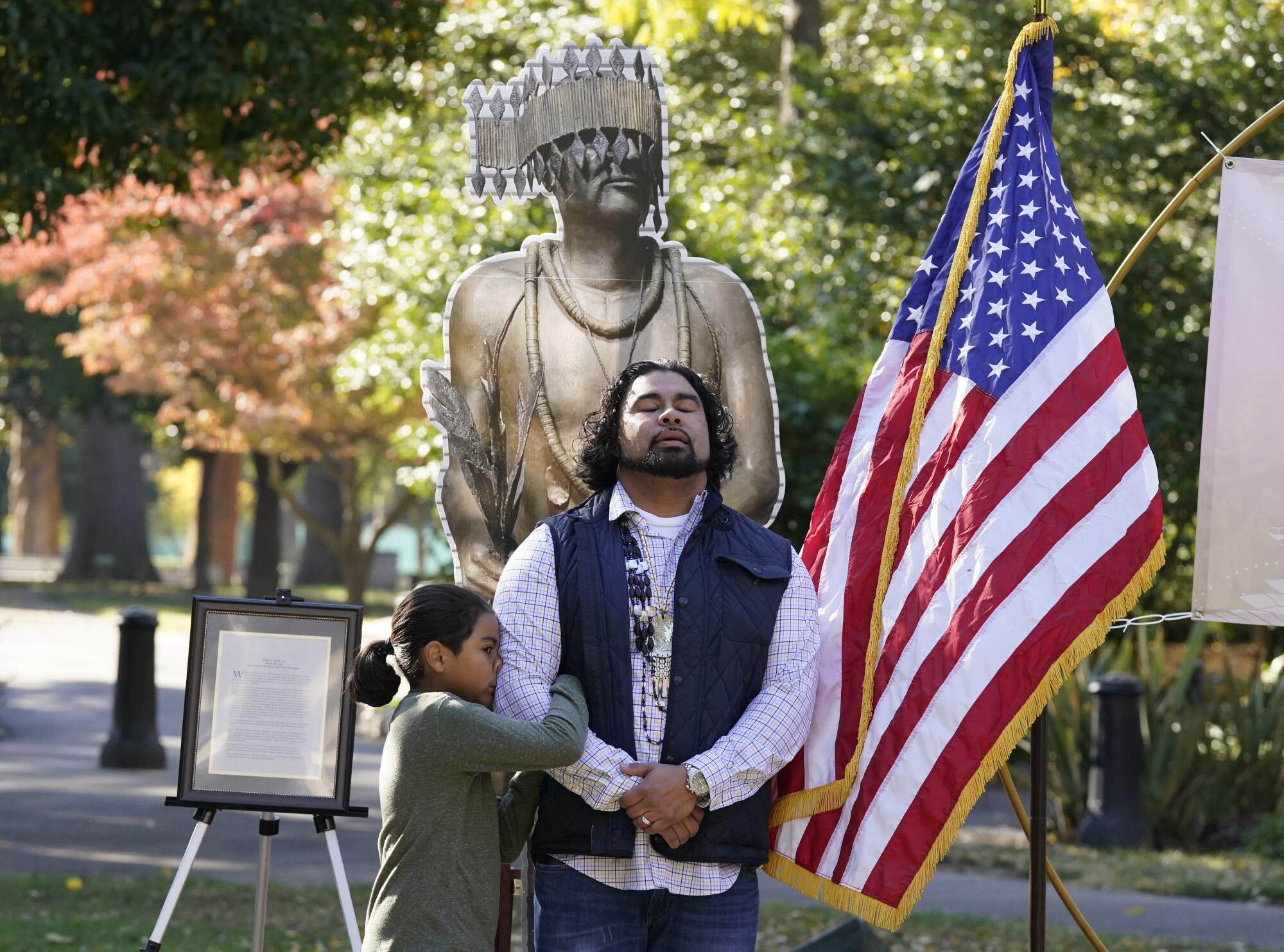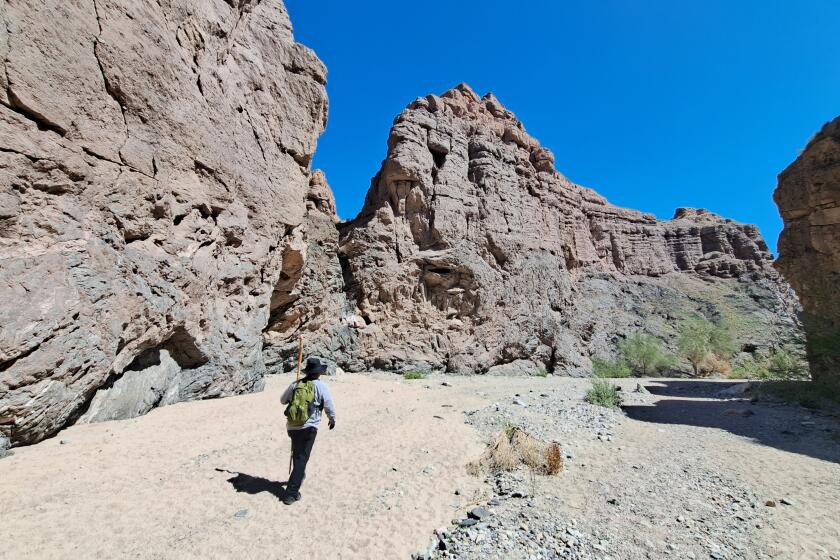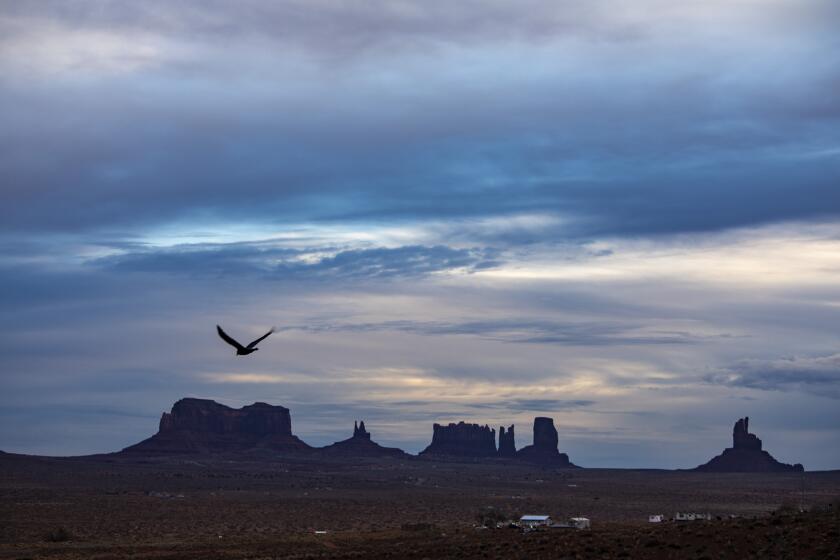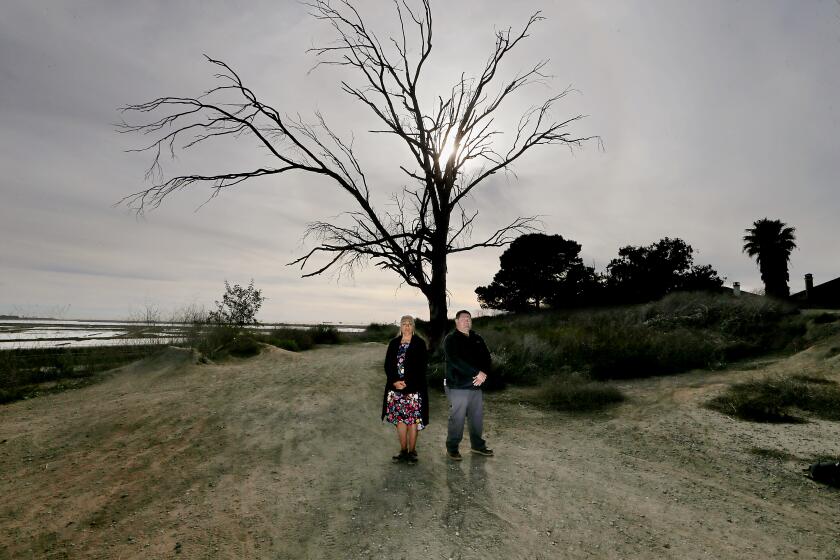
When the Wilton Rancheria tribe restored its control over a 77-acre parcel outside Sacramento recently, tribal Chairman Jesus Tarango Jr. couldn’t stop smiling.
“Days like this don’t come around very often,” Tarango said he thought to himself. “It’s a historic day for my people.”
For years, Tarango’s elders had fought to remain on their ancestral territory in the Sacramento Valley, only to have the U.S. government repeatedly renege on promises: Officials sold their land to private buyers and even canceled their status as a federally recognized tribe.
Now a portion of his people’s stolen land in the unincorporated community of Wilton — about a half-hour south of the state Capitol — feels like home again.
Indigenous Californians want President Biden to establish a national monument in a stretch of desert that is both an ecological wonder and a window into their cultures.
The tribe signed the land into a federal trust on Monday. Tarango described it as a victory for the Indigenous LandBack movement in California, and showed how patience and perseverance can pay off for other tribes working to reclaim lost territories and fulfill their yearning for self-determination.
“Home” means something different if you happen to be a descendant of the Miwok and Nisenan tribes that lived on and watched over this part of Northern California only to watch it fall into the hands of outsiders, Tarango said.
He describes his tribe as “a river people.” They view the Cosumnes River and the many creeks that rush over boulders and wind past wooded banks in their homeland as sacred givers of life and sources of power. Those waters flow through them too.
The people of Wilton Rancheria, the only federally recognized tribe in Sacramento County, have identified with the reacquired property along Green Road since long before the tribe purchased the largely undeveloped site from a private owner for $1.925 million in 2020. The land is part of the original tract that the U.S. government purchased in 1928 to establish the rancheria, or small reservation.
By the early 20th century, though, Indigenous Californians had already endured the seizure of their traditional villages and the violent suppression of their culture. So being allowed to live on federally designated land — in a region where they had been nature’s proud stewards since time immemorial — represented a bittersweet milestone.
The rancheria was meant to belong to its residents forever, a place where tribal citizens such as Tarango’s great-great-great-grandfather, Alec (or Aleck) Blue, a cultural leader and healer, didn’t need to fear further displacement. But Congress robbed them again when it passed the Rancheria Act of 1958, which terminated land trust obligations to dozens of California tribes, including Tarango’s. Tribes were stripped of federal recognition and left with no authority over lands that had been set up on their behalf.
More than a third of the Navajo Nation lacks running water. As the tribe nears a pact with Arizona over water rights, a California nonprofit looks to help.
The Wilton Rancheria nation won back federal recognition only in 2009 after a protracted campaign by tribal elders, including the chairman’s mother, Mary Tarango. Those victories gave the tribe the legal standing it needed to restore control over the 77 acres.
“Our tribe had to go and fight — fight — to get our land back,” Tarango said. “It was the stroke of a pen that took that away from us, yet it took us 50 years to regain our federal recognition.”
At Monday’s ceremony to place the tribe’s deed to the acreage into a federal trust, Amy Dutschke, director for the U.S. Bureau of Indian Affairs Pacific Region, said that “it’s a good day when we can restore tribal homelands for the benefit of tribal citizens.”
But even during an occasion made for rejoicing, Tarango said, he felt compelled to remark on that dark history to the tribal citizens who attended.
“I made it a point to remind people: When the government came, they stripped you of your identity, they stripped you of your language, they stripped you of your look, and the biggest thing they did was they stripped you of your land,” he recalled.
Tarango said the tribe plans to open an elder center on their reclaimed land in the coming weeks where older citizens can help rebuild those lost connections — by telling stories and passing on their wisdom to the younger generations. Long-term goals include building a cultural center and an arbor for traditional dance and games.
“It’s really going to serve as a village, as it would have been 150 years ago — but in today’s world,” Tarango said.
Tarango also hopes the good news will inspire non-Native Californians to reckon with the damage that has been done and help them see how reclaiming even small swaths of ancestral homelands can serve as a salve for an entire people.
Orange County returned 6 acres of land to the Acjachemen and Tongva people. Tribal leaders say it’s a small step in a movement to protect their heritage.
When Gov. Gavin Newsom issued an apology to Indigenous Californians in 2019 “for the many instances of violence, maltreatment and neglect California inflicted on tribes,” Tarango and his cousins were on hand to bless the occasion with traditional singing.
Newsom’s words felt like the first steps toward repairing the harm done, Tarango said, but he’s not satisfied with apologies alone.
What full atonement would look like is still up for discussion, but in the meantime the tribe is in the process of acquiring additional lands by year’s end, he said. The tribe will then seek to set up trusts for those properties, too.
Tarango choked up on the phone when reminiscing about the sacrifices made by his mother and other elders to assert the tribe’s right to chart its own destiny.
As much as he looks forward to working with officials in the county to maintain trust lands, he is especially hopeful that the land will help strengthen his people’s resilience.
“We’ve never been able to recover from the generational traumas that our people have faced,” Tarango said.
“That land going back into our hands — that is for us to do as we please — it’s going to serve my people as a healing ground. It’s almost like piecing yourself back together and becoming whole again.”










